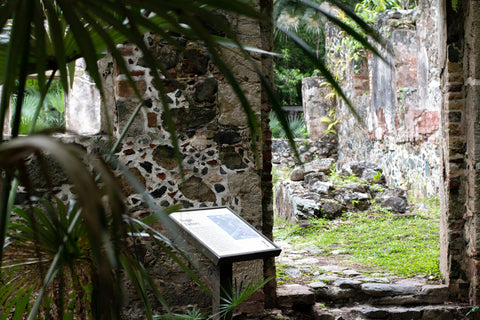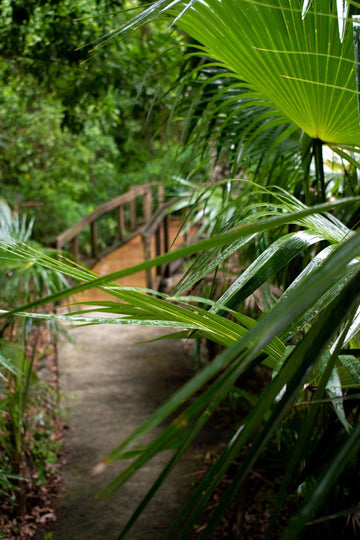
St. John, U.S. Virgin Islands is home of some of the most beautiful beaches in the U.S. but did you know it's also rich in history? In 1978, the Cinnamon Bay Factory Ruins was added to the United States National Register of Historic Places and the land is considered to be part of the Virgin Islands National Park. The ruin is adjacent to Cinnamon Bay Beach and is about a 10 minute drive from Cruz Bay. If you're looking for something to do outdoors with family while visiting then stop by the Cinnamon Bay Factory Ruins.
Cinnamon Bay Loop Trail

Once you arrive you will find signs along the trail that feature a variety of facts about the plant and animal life found there. You'll also be able to view the exhibits and the history behind them. The trail length is about 1/2 a mile and can take up to 30 minutes to hike. Not bad!

Along the trail you'll find what remains of the Sugar Factory. According to NPS.gov the factory was established by the Danes in 1717. It was one of the earliest sugar plantations on St. John. Its owner, Daniel Jensen, played a major role in the slave rebellion in 1733. You'll also notice the horse mill, where the cane's juice was squeezed out between iron rollers and traveled to a nearby boiling room. The leftover cane was stacked in a shed to dry then later used as fuel for fires.
Fun Fact: If you walk through the boiling room, you may be able to see the remains of the cauldrons used.
Plant Life
While enjoying the history of Cinnamon Bay Factory Ruins, notice the plant life surrounding you. Look out for the Tyre Palm! It's the only native palm remaining on St. John and thrives in moist cool environments. The leaves were used for huts and for brooms and the bark was made into hammocks and fish traps.

The Bay Rum Tree is another historical nature find along the trail. Children would climb up these trees to pick the shiny Bay Rum Leaves while women gathered them below. The leaves were steamed and the oil from them would be extracted and used to make St. John Bay Rum.




The ruins also include slave quarters, The Cinnamon Bay Estate, two cemeteries, and a warehouse. The next time you're visiting St. John, be sure to check out the Cinnamon Bay Factory Ruins!




























